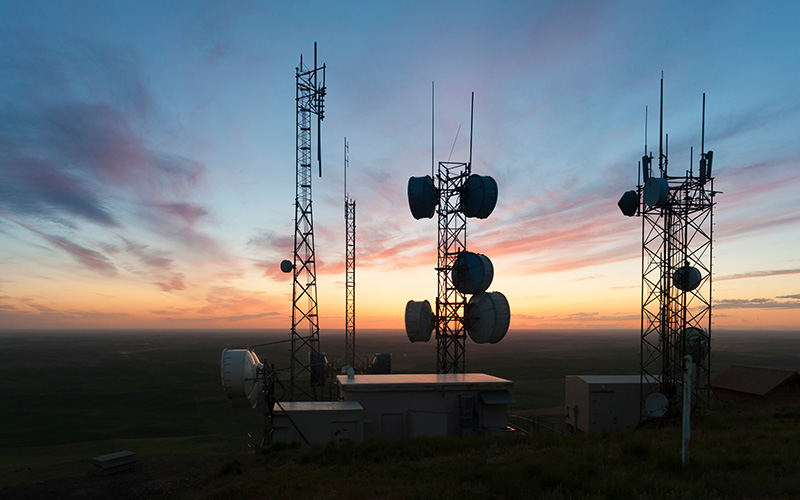
How long does it take to get a patent, and how can you speed up the process?
In our fast-paced business world, it can be tempting to look for shortcuts whenever possible, and the patent filing and prosecution process is certainly no exception. But while this impulse is understandable, rushing through the process can backfire and adversely impact the quality of your patent application.
Editor's note: We would like to acknowledge the valuable contribution of Irene Corn in authoring the original version of this article. While its core ideas and insights remain unchanged, our current team has reviewed and updated the content to ensure its continued relevance and accuracy.
There is no simple, one-size-fits-all answer to the question, "How long does it take to get a patent?" It varies considerably. Relevant factors include national laws, any backlog that patent offices happen to be facing, the availability (or lack thereof) of expedited processing options and the quality of the patent application itself.
Improving your chances of receiving a patent grant as promptly as possible starts by knowing the rules of the game. But understanding the application process inside out is not enough on its own: You will also need to be thorough and precise in your execution of every step. This does not need to be intimidating, as the assistance of patent law and Intellectual Property (IP) management experts can smooth things out.
An overview of the patent life cycle
Ballpark figures
On average, before a patent office without a significant backlog, it takes a minimum of a year to process a patent application, with the length of time from filing to approval being about two years. Various circumstances — anything from poorly drafted claims or other formal and substantive inaccuracies to an overburdened office — can make it last as long as six.
No matter what occurs at an IP office, the road to patent protection begins when an individual inventor or organization comes up with an idea for a novel device, machine, process or method.
Terms of patentability
The Agreement on Trade-Related Aspects of Intellectual Property Rights (TRIPS) sets out minimum standards regarding the main types of IP for the 164 members of the World Trade Organization. In Article 27, we find a brief definition of patentable subject matter in that "patents shall be available for any inventions, whether products or processes, in all fields of technology, provided that they are new, involve an inventive step and are capable of industrial application." (Some countries, including the United States, use "non-obvious" instead of referring to the inventive step.)
This description serves as a reasonable baseline, but it must be borne in mind that individual jurisdictions can have specific regulations that you must take into account. For example, the physical design of a machine can be protected in the United States using a design patent. In the EU, you would use an industrial design for the same purpose.

Along these lines, what many countries simply refer to as a "patent" is called a "utility patent" under U.S. rules. Furthermore, numerous countries and regions have different conditions for patenting specialized items such as pharmaceutical products and certain new plant breeds.
Having determined whether an invention for eligible for and worth patenting, the drafting and filing process can begin.
The patenting process in brief
- Once the invention is complete and can be reproduced at an industrial level, its characteristics must be fully documented in an application form.
- The application should include a written description of the invention's purpose and operation, drawings that illustrate its function and claims that adequately explain its inventive step (or non-obviousness).
- In the case of a process or method, as opposed to a physical device, the application must detail how it would be implemented and what components would be involved.
- After the inventor or organization submits their application and pays all required fees, the receiving patent office will begin its examination.
- While the examination process is ongoing, it may be necessary for an examiner to contact the applicant for clarification on certain aspects of the patent's claims or abstract. The examiner may also request the submission of additional information — incurring its own cost.
- Finally, the office will issue a patent grant or declare that the application has been rejected.
- If initially rejected, it is common for offices to allow a round of emendations to address the ground(s) for refusal.
- A petition to the patent office's appeal board is often permissible after a second rejection. If this appeal also fails — outside of extraordinary circumstances — the patent application will be considered abandoned.
The life of a patent
After a patent is granted, its protections immediately take effect and are retroactive to the original filing date. Barring third-party actions such as nullity procedures, these protections will remain in force for 20 years (in most jurisdictions) or until the holder fails to renew them through the timely payment of maintenance fees, whichever comes first.

The potential duration of exclusive rights and the protections an issued grant offers against infringement make the wait worth it in most circumstances. But as outlined above, it is important to be realistic about this stretch of time and what impacts it.
Why does it take so long to get a patent?
The simplest answer to this question is that patents, like trademarks, design rights and all other IP assets, are bound by the terms of specific laws that impose demanding standards. It is also a matter of sheer volume. At any given time, patent offices might be looking over thousands of patent applications. Each one requires a meticulous process, and examiners must:
- Look for relevant prior art
- Check application documentation to ensure it meets all formal and substantive requirements
- Directly confer with would-be patentees, as needed.
Patent examiners want to make absolutely sure that they have got everything right. If, for some reason, they failed to discover a piece of prior art and issued a patent that was invalid, it would undercut the system's goal of promoting innovation.
An inventor who files for a patent without the aid of an experienced patent attorney risks errors that slow down the process. Mistakes made by applicants are a common reason a patent grant may be delayed — arguably the most common. Whenever an examiner finds a problem with an application (an incomplete drawing, missing information, etc.) or has a question about any claim in the filing, they send a notice to the patent applicant saying as much. They wait a prescribed time for a reply: In many jurisdictions, this is two months. If you were to receive such a request and did not reply to it within the time allotted, your application might be considered withdrawn.
More to the point, processing stops in its tracks whenever examiners need additional information. An application that might have been processed in 24 months could then take at least 26 months.
Regulators working to approve patents faster
In certain fields, like telecommunications or computing, an invention might become obsolete in a few years. Even if patent protection is not sought for an end product, it remains necessary to safeguard the research and development efforts underpinning such devices. Ultimately, a more time-efficient approach to the patent application process incentivizes innovation.

Patent offices are aware of all this, including the five agencies comprising the IP5 group: the United States Patent and Trademark Office (USPTO), European Patent Office (EPO), Japan Patent Office (JPO), China National Intellectual Property Administration (CNIPA) and Korean Intellectual Property Office (KIPO). To speed up the grant process and reduce backlogs, the IP5 sought to reduce work being unnecessarily duplicated between them. That was why on January 6, 2014, these offices set up the Patent Prosecution Highway (PPH), which "fast-tracks patent examination procedures … to allow applicants to obtain corresponding patents [from the other four offices] faster and more efficiently." Given that collectively the IP5 process about 80 percent of all patent applications, this is an extremely useful initiative.
More recently, patent regulators such as the EPO have been working to leverage machine learning (ML) and artificial intelligence (AI) techniques to "increase efficiency and quality in the patent grant process," specifically in the areas of translation, search and classification. Here, the challenge lies in the fact that patent applications and related documentation are not written in a way natural language processing (NLP) technologies can quickly master. Because of this, it takes a greater computational effort and requires more time for these advanced tools to achieve reliably accurate results.
How do I speed up the patent grant process?
Simply put, the best way to reduce the chances of any delay in the grant of your patent is to be as thorough as possible when you draft your application, description, drawings and claims. The fewer steps added to the process through requests for information, the better.

There are also conditions under which you can request an accelerated review. These differ significantly from country to country, as do their speeds:
- The USPTO aims to process accelerated applications within 12 months of the filing date.
- Japan's expedited examinations had an average pendency of 2.3 months, according to the most recent figures in 2017
- The European Patent Office (EPO), under its PACE program, supplies applicants with the options for faster search and examination procedures. European search reports aim to be delivered within six months and examination reports within three months of their respective PACE requests.
- In India, applicants can request expedited publishing so that pending applications are made public within one month. This begins examination more quickly but does not guarantee faster examination.
Such programs usually involve higher processing fees and may also require the submission of extra documentation. Lastly, if filing a patent application in one patent office for an invention that has already been considered partially patentable by another, you may receive further expedited review if both jurisdictions are party to the PPH program mentioned above.
Dennemeyer's team of experts can provide the legal advice and support you need to craft the most comprehensive, persuasive patent applications and navigate the prosecution process smoothly. Our global reach and broad spectrum of patent services ensure you are never without skilled IP counsel and management.
Filed in

Take a closer look at some of the top pharmaceutical trends and how IP is driving and being driven by these changes.



